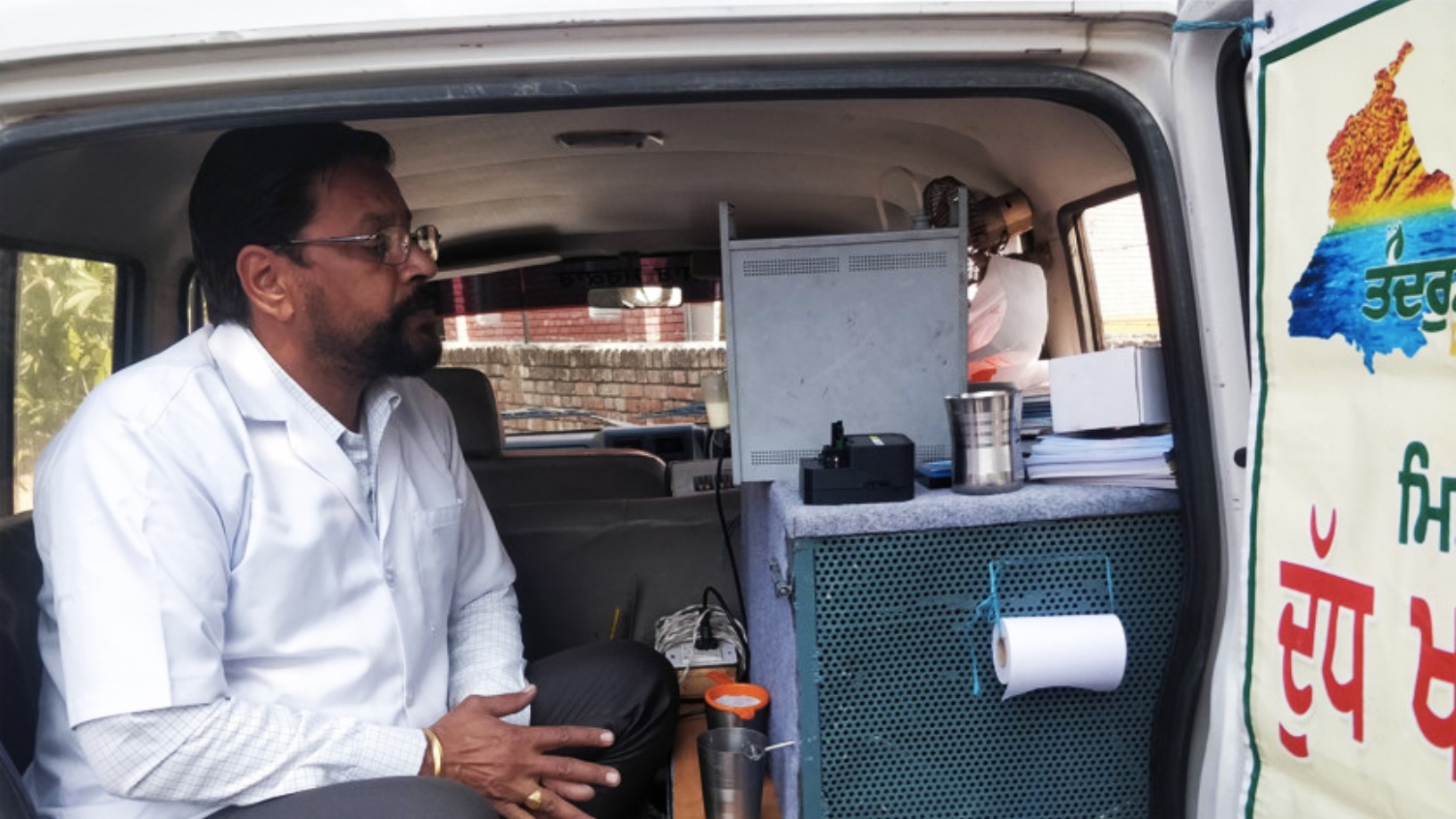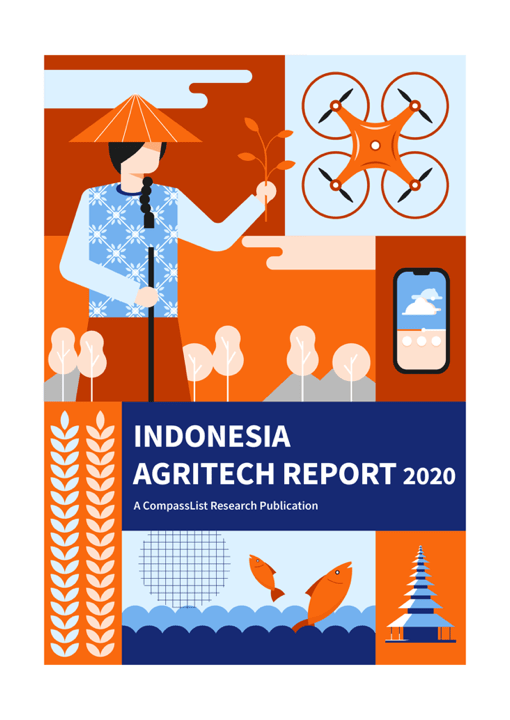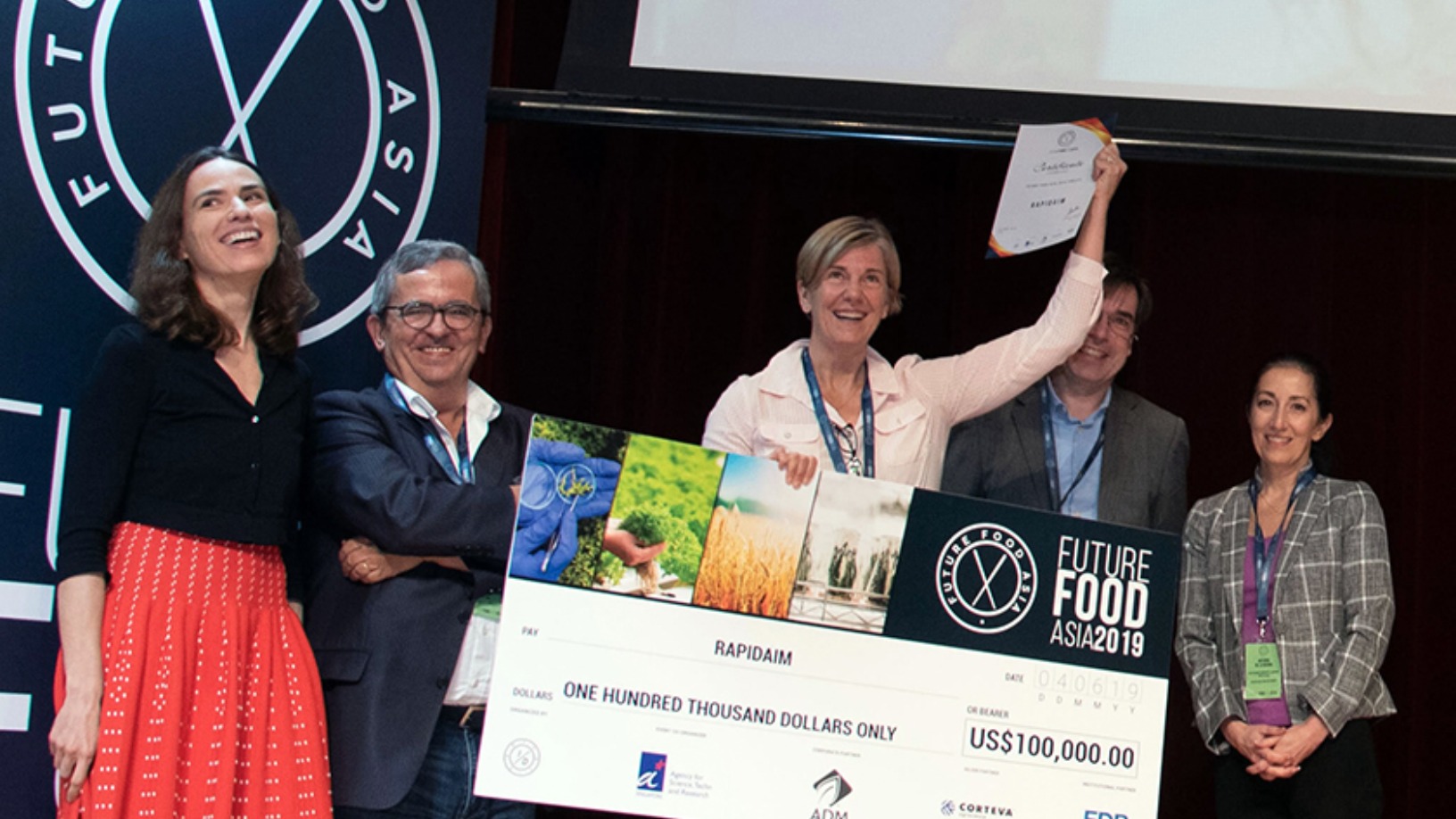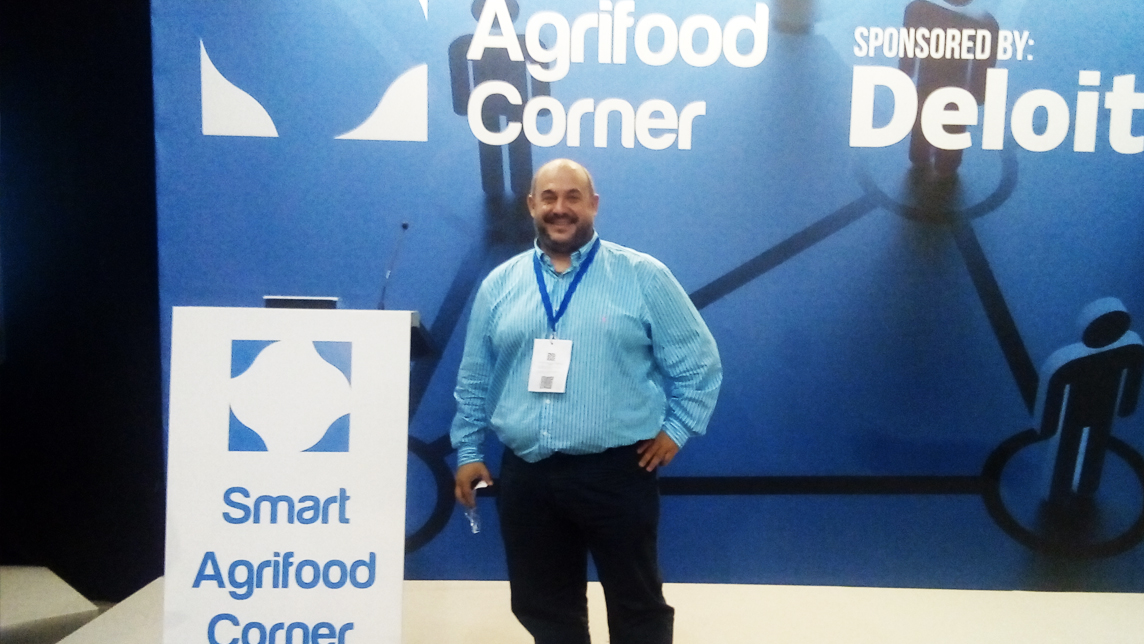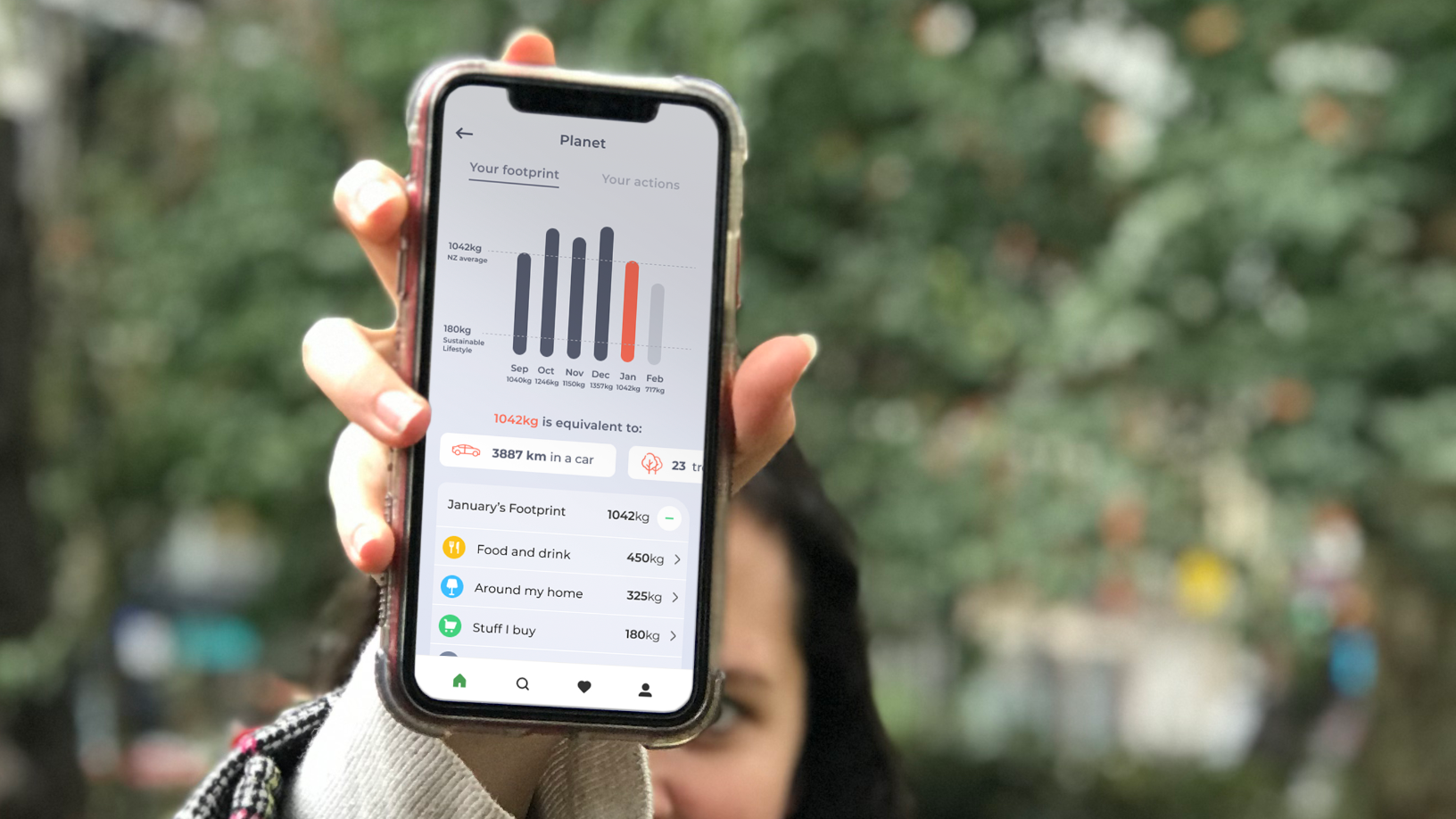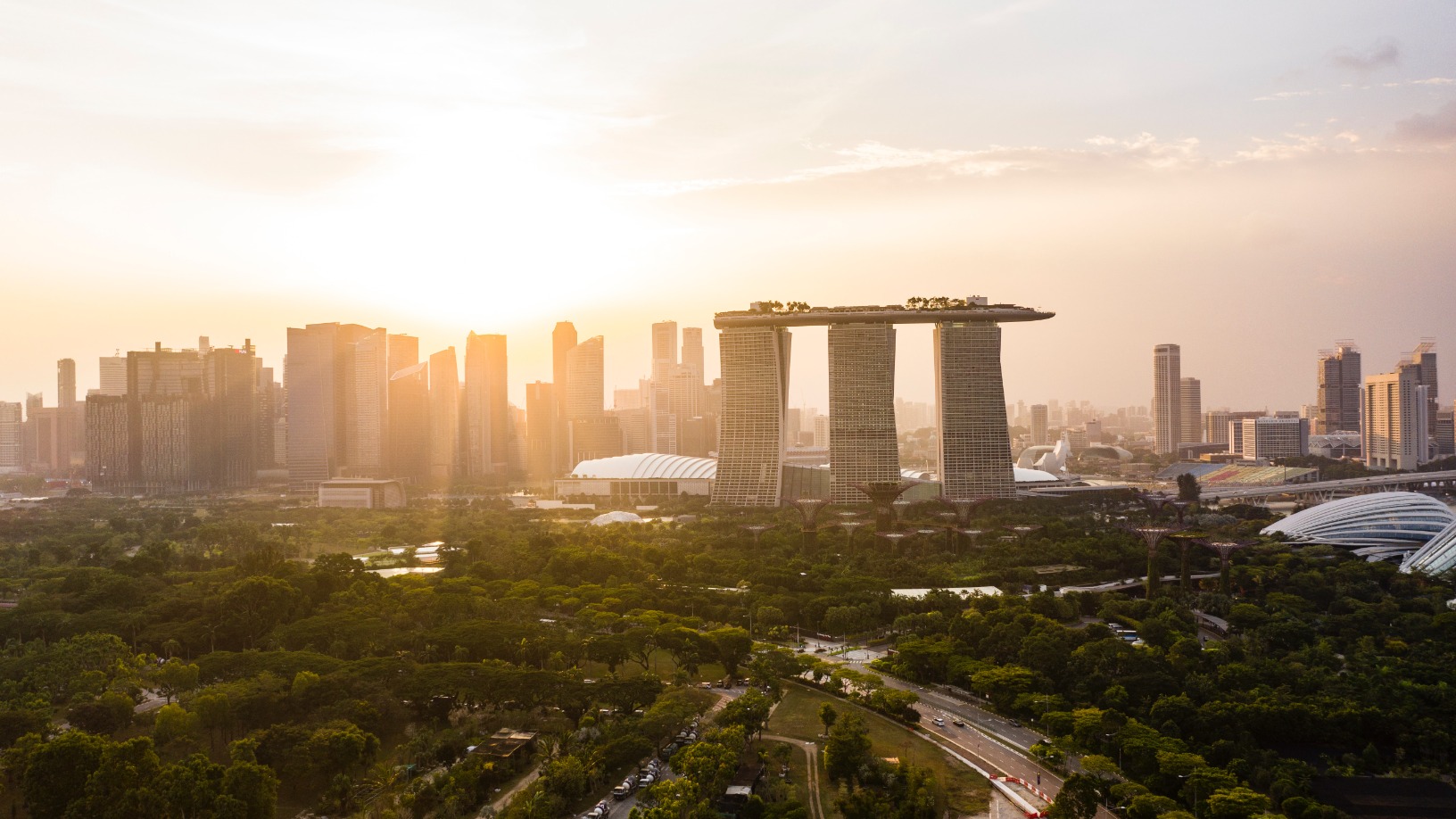Contaminants, differences in nutritional content and even color can change how much a bag of wheat is worth in the agriculture commodities industry. But traditional product testing methods are slow and subject to human error, and hence ineffective for farmers and food producers needing to gauge or better control their final selling prices. Indian startup AgNext wants to change all that with its computer vision, spectroscopy and sensor-based tools.
Its SpecX Visio technology uses deep learning and computer vision to help users recognize physical imperfections in crops in the field, removing the inherent subjectivity in traditional, experience-based commodity assessment. The company has also developed portable spectroscopy equipment, enabling quick chemical analysis in the field. Its ambient environment sensors monitor fine changes in temperature and gaseous chemicals in warehouses, which can help distributors minimize food loss.
AgNext CEO Taranjeet Singh Bhamra co-founded the company in 2016 after working overseas for about nine years on data sciences in supply chain and food businesses. Speaking to CompassList recently via an online call, Bhamra said he returned to India to solve problems in agriculture and food industries using data and extreme tech.
“I wanted to create a single platform that can evaluate the quality of food the way we do in the labs, but on the ground. It can bring a lot of value to the business and the farmers. That was the whole idea behind AgNext,” Bhamra said. “Food waste is a big problem; there's not enough cold stores, not enough warehousing. We use sensors to prevent that.”
Agnext, which pitched at the recent 2020 edition of the Future Food Asia Conference, currently focuses on four segments – beverages, grains, spices and animal feed – and has more than 50 clients in India. The company has already won the support of major Indian investors Kalaari Capital and the agritech-focused Omnivore. By 2019, it had raised $4.1m in early-stage funding. AgNext has set its sights on a Series A close next year for expansion into the wider Asian market through Thailand and Singapore.
I wanted to create a single platform that can evaluate food quality the way we do in the labs, but on the ground
Early, accurate detection
According to Bhamra, digitalization of food and the ability to quickly gauge the quality of crops will lead to fairer prices for farmers and off-takers and also reduce food loss. Quick spectroscopy analysis can also be a powerful deterrent against tampering and provides traceability of food at more points in the supply chain.
"It can bring a lot of value to businesses and farmers,” said Bhamra, a graduate in agricultural and food engineering from the prestigious Indian Institute of Technology (Kharagpur). He also has an MBA from the Indian Institute of Management in Calcutta.
“Trucks can wait for days to get results from analysis before shipping, but with our product that can be reduced to one to two hours,” Bhamra said. This is important in situations where there are insufficient proper storage facilities. According to Bhamra, around 20% of rice stored in government warehouses end up going bad before distribution.
Using AgNext’s technologies, distributors and off-takers can save between 0.5% and 4% in costs through early detection of impurities and precise prediction of chemical constituents. These percentages may seem small, but Bhamra said they add up in large scale commodities trading.
“If you’re a company buying $1m–$2m worth of milk daily, 1%–2% contamination is a huge value, but losses from contamination can be predicted and prevented [using Agnext’s technology].”
According to Bhamra, AgNext’s spectroscopy analysis can achieve at least 98% accuracy, which is comparable to lab tests in controlled conditions. Feedback from clients have been positive, but clients want it to be even more accurate, he added.
Bringing the lab to the field
A major challenge for the company was the development of portable spectroscopy and computer vision machines for field operation. Spectrometers are usually only available to scientists in laboratories, who work with specific experimental protocols to ensure accuracy. AgNext had to enable their machines to be taken out of laboratory setting for operation with comparable accuracy, while also being easy to use.
This involved developing machines that can work without having to process the testing samples into powder or liquid form. “We understood that processing the samples through mulching or powdering is very difficult,” Bhamra said.
“Our process is different to lab study, modified to deliver what's needed for the layman," he added. "A lot of innovation was required on the hardware to do that, along with machine learning and AI. It's like SpaceX thinking about sending rockets to the Moon or Mars. We have to rethink the technology.”
For each of the verticals it covers, AgNext offers a combination of its technology to analyze quality. “For example, a tea company can do computer vision analyses and closely look at the quality of the leaves and analyze polyphenol content using spectroscopy to grade their best quality tea,” said Bhamra. The company is also exploring analyzing meat for protein content and contaminants.
It's like SpaceX thinking about sending rockets to the Moon or Mars. We have to rethink the technology
With different parameters to measure and analyze, building a machine learning model for each type of product is a challenge. It can take two to three months to collect enough samples to develop a robust model, he said.
Bhamra gave the example of analyzing meat protein content in a range of 15%–35%. To build a machine learning model for this, AgNext would have to collect meat samples within that particular range, analyze the spectra of the proteins and match them with the protein content. Since there is no way to tell the protein content before analysis, AgNext would have to collect thousands of samples to cover the desired range.
Licensing and service models
AgNext offers its products through a licensing model as well as a service model. This opens up AgNext to more opportunities, as it can cater to smaller businesses that cannot afford to buy the devices. “We found that when we sell hardware, it's a lot of capital expenditure for the client,” Bhamra said. “Providing it as a service means clients can build up on it, and they can provide value to their own clients.”
After more than three years of building up its tech stack, AgNext will be taking this service approach as it expands into the wider Asian market in the coming months. The company is looking into Thailand and Singapore as its beachheads. These countries, according to Bhamra, occupy strategic roles in the food commodity markets.
“Singapore is a commodity trading center and a great financial market, while Thailand is a big global market for animal feed. Our technology is also important for agriculture and commodities insurance, as well as other fintech applications. This is why we’re looking at Singapore.”
The company is planning to raise Series A funding by early next year to support its expansion plans. The funds will go toward sales, marketing, and international outreach, as well as expanding its manufacturing capabilities.
Bhamra is confident that AgNext and the wider agri-food tech sectors will attract greater attention from both investors and entrepreneurs. With more success stories emerging and more investors betting on the future of food, talent from outside the agriculture and food industry backgrounds will begin contributing to agritech development.
“The experiences of entrepreneurs coming from fintech and supply chain are going to be valuable for agritech and foodtech. We're thankful to have started early and to be right on time to bring the technology forward,” said Bhamra.
